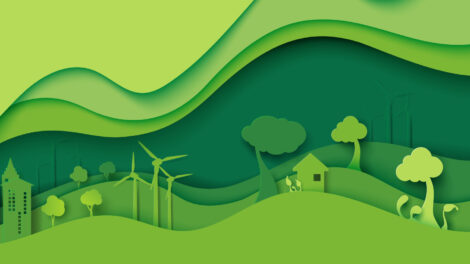Community garden advocate Miranda Wilcha '16 is helping Easton residents connect with green spaces—and each other
By Katie Neitz
For Miranda Wilcha ’16, practicing sustainability is more than just a lifestyle choice or individual commitment. Wilcha sees how sustainable values can create a healthy, engaged community where people of all backgrounds can thrive.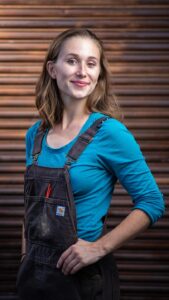
As the community gardens and compost coordinator for the Greater Easton Development Partnership (GEDP) in Easton, Wilcha works to ensure that Easton community members have access to green space and nutritious, affordable locally grown produce. She oversees five community gardens, known as Easton Garden Works, and she helped launch Easton’s first residential compost program, which enables residents to be involved in the entire lifecycle of their food.
The value of community gardens is substantial: They improve participants’ quality of life by providing opportunities to eat more healthfully, develop new skills, engage in physical activity, and connect with neighbors.
“One family in the community gardens grows sagaa to round off their family’s traditional Kenyan meals, and it’s amazing to know that without space to grow it, they likely couldn’t find this food elsewhere in the area,” Wilcha says. “It’s humbling to know that if I can just provide some decent soil, space, or resources, my neighbors already know how to make the magic happen. Sharing resources and land together empowers us to eat more healthfully, steward the land, and revitalize our spaces.”
We asked Wilcha to share her sustainability story.
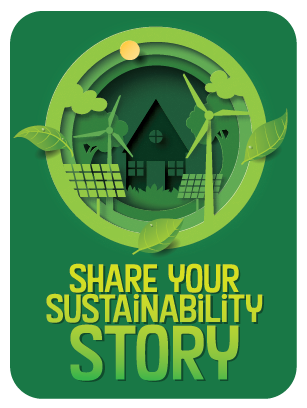 What sparked your interest in this type of work?
What sparked your interest in this type of work?
Throughout high school, I was very interested in social studies and history. I enjoyed learning about how people interact and work with each other. My senior year, I had a really interesting AP English class that focused on service learning. We learned about hunger and homelessness, and that just stayed with me. I believe in trying to make equal space for everyone, and I’m interested in how we can live in a more egalitarian society where people can live and eat and be on more equal terms with each other. That’s why I was initially just an anthropology and sociology major.
Why did you add environmental studies as a second major?
I took an Introduction to the Environment course and something just clicked. We talked about food justice, and that seemed to fit well with my interests. I also think it was due to all of the activity and enthusiasm on campus from the student body about environmentalism and sustainability. There were so many clubs and ways to get involved. The study body really inspired me to get active. I started working at LaFarm and volunteered with LaFFCo and LEAP. It was an exciting time, as students were participating in conversations about creating an Office of Sustainability. I came to Lafayette wanting to make a difference, and I feel that Lafayette helped me to connect the dots. I got the tangible skills I needed to make a difference in my life and the lives of others.
What was your role in the College’s Office of Sustainability?
I was very fortunate to become the College’s first sustainability fellow, a two-year position, right after I graduated. In that role, I worked to improve recycling and waste streams, aggregate greenhouse gas data for the College’s records, planned educational events, and participated in the early conversations about climate action planning.
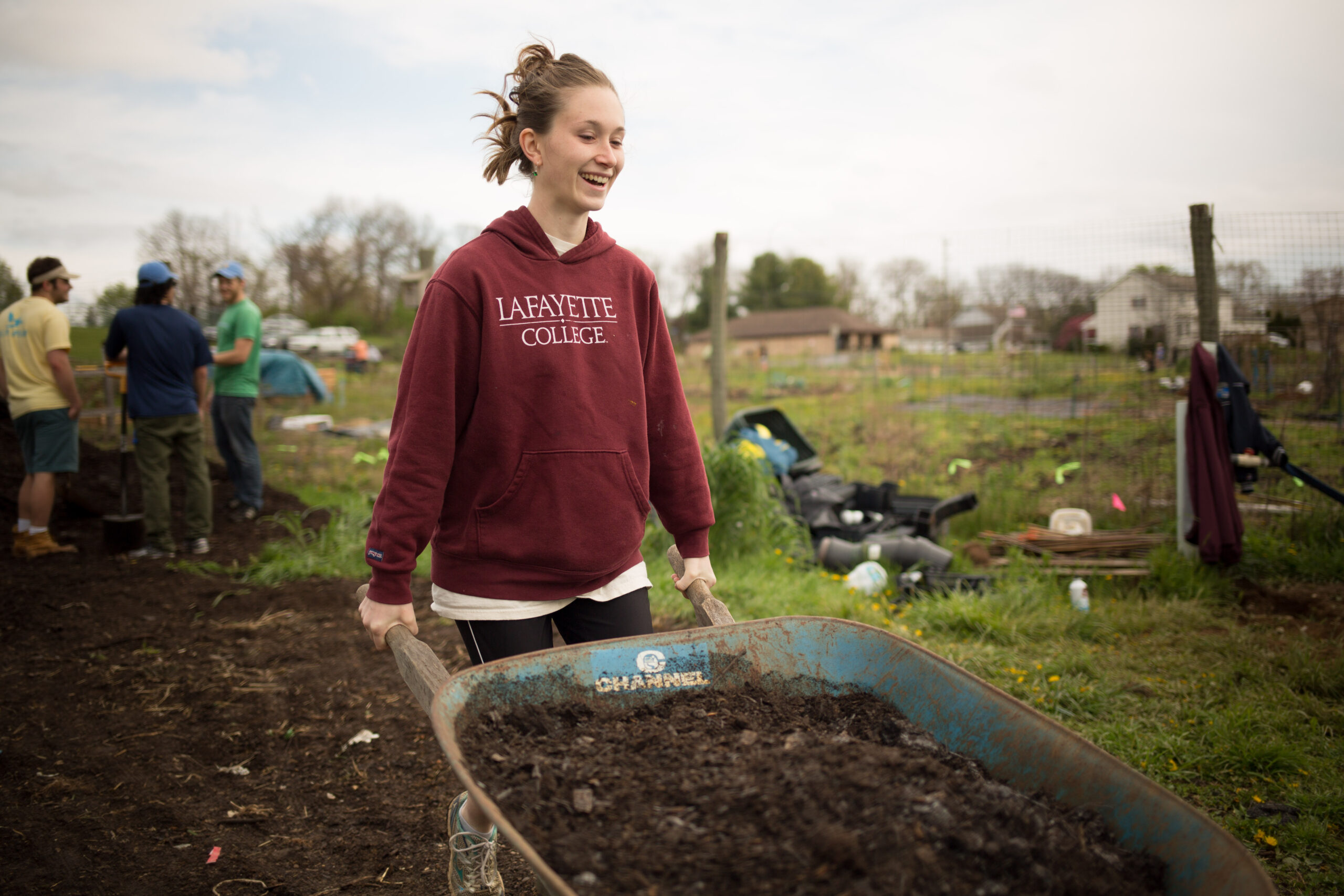
Wilcha, working at LaFarm as the College’s first Sustainability fellow in 2016.
What attracted you to your current role with GEDP?
Northeastern PA has always been my home, so I wanted to continue working here—and specifically with boots on the ground. I’ve been so fortunate in finding a home at the GEDP where I assisted to start Easton’s first residential compost program (keeping our food loop local and limiting emissions and waste), and oversee five community gardens in Easton that provide neighbors with access to green space that positively affects their health, the community’s, and the broader environment’s.
What about your work brings you the most satisfaction?
It has been incredibly satisfying to start seeds in the winter, and tend to them through harvest. Handing off your seedlings to gardeners who, in turn, grow tomatoes and peppers in abundance is very rewarding. Even more so when that produce is then donated to our neighbors for the Vegetables in the Community program, or to local pantries. Seeing personal growth and sparking interest in nature during our children’s programming has also been very satisfying. We grew cucumber seedlings with children from the Easton Area Community Center this summer, and seeing them check on their seedlings each week and note the changes in the plant was so interesting. Kids have a unique perspective on things they find in the garden (bugs, compost, etc.), and watching them relay newly discovered facts to their parents makes it feel like they’ll grow up caring about how they interact with their environment and community.
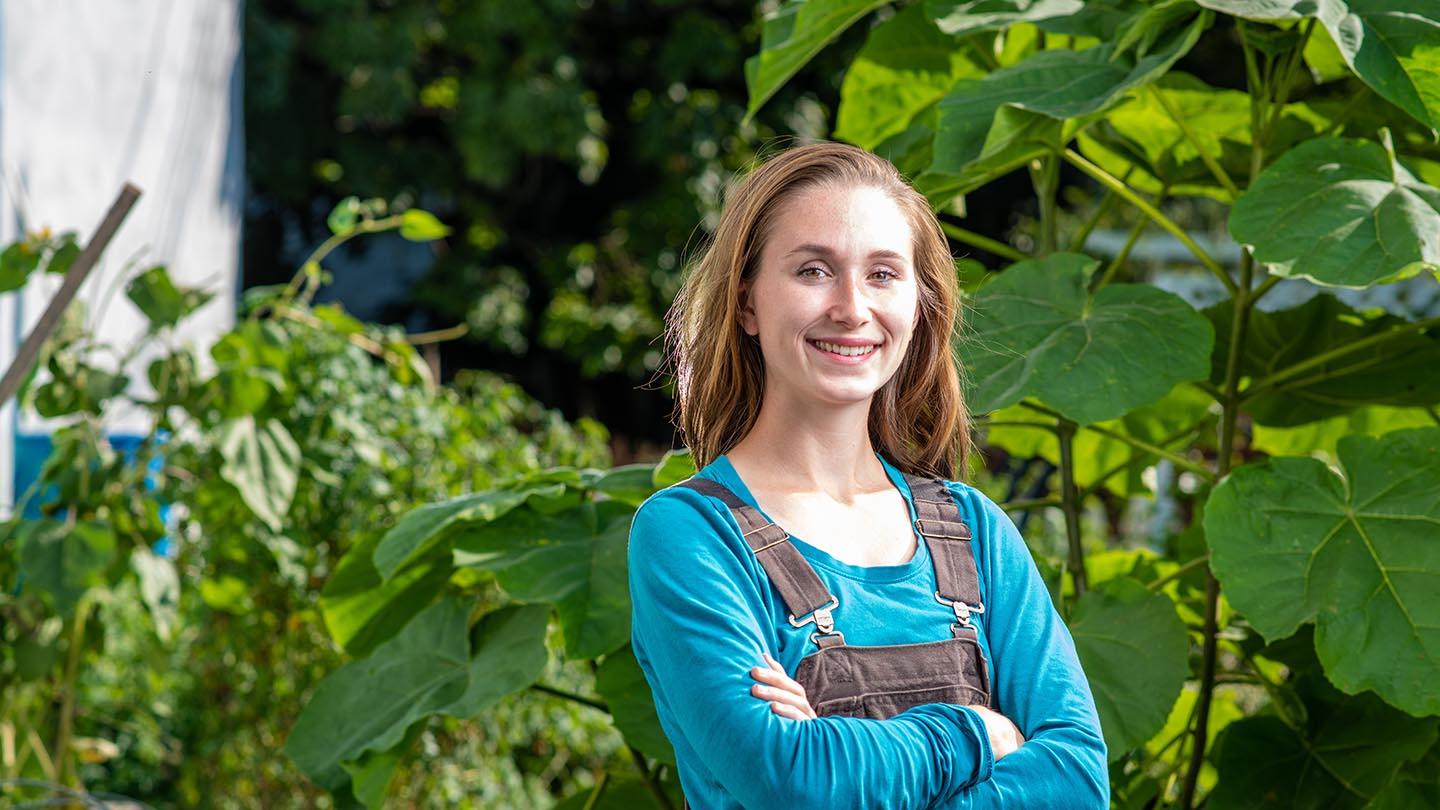
How did COVID impact your work?
I think the stress about access to healthy food and worries about food shortages really kicked my program into gear last spring. I started growing seedlings in the basement of the Public Market. We ended up growing 315 plants that we eventually gave out to community members. We grew eggplants, peppers, and tomatoes using burlap sacks donated by Homestead Roasters in milk crates donated by Highmark Farmstand. We handed out the seedlings at the Easton Area Community Center and the Vegetables in the Community stand, and we also gave out seed packets and growing instructions for zucchini and cucumbers. It was a worrisome time, and it felt incredibly meaningful to assist people in the West Ward. A silver lining from it all is that the plants ended up growing really well, and more people than I expected were excited to take them home. I think it’s something we will continue in the future, since it seems like a good introduction to gardening.
What have you learned in the process?
I’m still learning so much every year and every growing season. I don’t have the same level of experience that some of our gardeners have, and so it’s a great learning experience for me. I’ve learned more about native plants and growing conditions, and how to build better raised beds. I’ve reaped a lot of information and knowledge from people. There are these community heroes—amazing volunteers and people who are excited about different initiatives and are always showing up. That’s something that’s so nice about the idea of community gardens—it brings people together. People share their tips and tricks.
Amid the doom and gloom about climate change, how do you stay positive and optimistic?
When it feels like there is a lack of agency, you can feel a little helpless. I realized that I thrive from a group dynamic. That’s what initially brought me into sustainability on campus—all these students were banded together, working together on projects that we all cared about. So it’s been good for me on a personal level to be with an organization and community members who care and are working together with the same goals. My co-workers bring me a lot of inspiration. If you can find allies and friends who are like minded, you can band together and create programs and collaborate on projects that can make a difference and can make you feel grounded and not lost.




